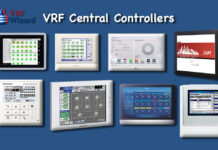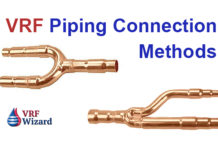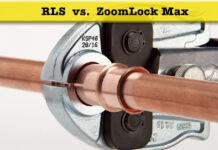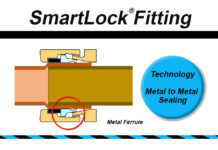VRF System Installation Cost Budgeting
The collection of parameters related to the VRF industry is important for understanding historical cost and engineering rules of thumb. Using this VRF Estimating Spreadsheet will save you time and money and help you quickly budget the VRF system installation cost using historical data. The Spreadsheet can be used for all project types from Commercial to residential and system types such as: VRF, Chilled & Heating Hot Water, Air Conditioning Packaged and Split Systems, Air & Water Cooled Heat Pumps, etc ..
VRF Historical Data Collection
How much per ton does it cost to install the various types of VRF/HVAC systems in the various types of buildings that you perform your contracting business? Are these numbers reliable? How many square feet per ton is the typical VRF/HVAC system in the different building types you are installing a VRF system? Gathering this information on the projects you bid or install is important for future projects that you are budgeting or bidding with a guaranteed maximum price (GPM ). Having historical data saves time and money on future efforts, including as a sanity check for VRF estimates under current consideration.
VRF System Cost per Square Foot
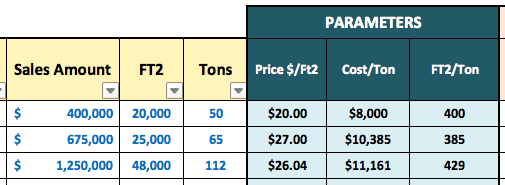
An easy parameter to track is the cost per square foot of the conditioned space for the new VRF system installed. Take the total cost of the project divided by the square feet or square meter of the project to arrive at a cost/Ft2 or square meter. There are three samples above ranging from $20.00 to $27.00 for the cost of a VRF system installed.
VRF / HVAC System Cost per Ton
This is a simple formula by which you can track the installed cost per ton for the various VRF systems that you install. Just take the total cost and divide it by the total tons installed, (Cost/Ton). Tracking this over time will give you a good sense of what a project might cost before even attempting to put together and estimate. These values are also useful for sanity checks when bidding a current project. Does the current estimate fall within the range of the cost per ton of the projects that you have completed in the past?
VRF / HVAC Square Feet per Ton
This engineering parameter is easy to track also, and is useful for budgeting. If you ared bidding project that are engineered by 3rd party engineers, then just take the total square feet of the area served by the VRF system and divide it by the total tons. VRF Ft2/Ton
VRF / HVAC System Piping Installed Cost
Tracking your ACR refrigerant piping field installation productivity is useful for bidding future work. Its important when estimating the installed cost of ACR piping that you understand how fast and under what conditions your field workers can perform. How many linear feet per man day can you piping crew install? The below are examples and don’t represent a real project. Use an industry standard database like MCAA if you don’t have an understanding of performance metrics.
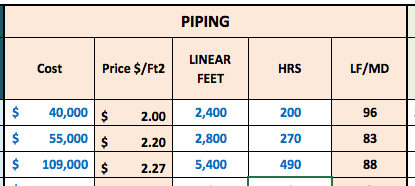
VRF / HVAC System Installed Cost Parameters
The VRF System Historical Cost Database and Parameters Spreadsheet by the “VRF Wizard” includes dozens of other parameters to track depending on your need for analyses. Included are Sheet Metal, Equipment, Controls, Engineering, Startup & Test, Air & Water Balance, Electrical, Insulation, Rentals, Plumbing, General Construction, Cost per Guestroom and several wild cards that you can fill in to measure other parameters.
VRF / HVAC Budgets
Using the two parameters above will then allow you to budget any building simply by using those VRF cost and engineering values. If the owner has a certain square footage for their project and wants you to provide a quick budget, this will be a simple calculation for you. Using the data you collected from engineered projects showing how many square feet per ton is typically allocated for a similar project in the same geographic location, adjusting up or down based on projects specifics, like exposure, amount of glass and energy efficiency of the building shell.
VRF / HVAC System Installed Cost Example Project:
If you were asked to provide a VRF budget for an owner that wanted to air conditioned a 15,000 Ft2 office space, how would you approach this quickly. With the VRF System Historical Cost Data and Parameter Spreadsheet it would take less than a minute using the following steps.
15,000 Ft2 Office Building
Sorting the VRF Wizard Budgeting spreadsheet by Office buildings and the VRF system type you arrive at 350 Ft2/Ton.
Step-1 Sort VRF Spreadsheet by Office building and System type.
- Historical Data for Ft2/Ton = Average equals 350 Ft2/Ton
Step 2 – Figure out how many tons will be required for your 15,000 Ft2 project by using historical data from your spreadsheet.
Tonnage for new Budget = 15,000 Ft2 / 350 Ft2 per Ton = 43 Tons
Step 3 – Using your historical database for the type of building and system of your 15,000 Ft2 current proposal you find that it equals $9,000 / Ton
Historical VRF Cost Data = $9,000 / Ton
Step 4 – Apply results from Step-1 with results from Step-2 to find budget proposal amount.
Budget Proposal = 43 Tons * $9,000/Ton = $387,000
Equivalent Cost per Square Foot = $387,000 / 15,000 Ft2 = $25.80 / Ft2
These values are just examples and don’t represent an actual project. These values will vary based on Union versus Non-union labor rates and your companies’ labor productivity and purchasing power in addition to other variables.
As you can see you can approach the same number by two different ways. You could budget the project based on a cost $/Ft2 or a cost $/Ton.
VRF / HVAC System Installation Cost Database
The VRF Wizard Database allows you to enter and sort by the following fields, Bid or Sold (completed Projects), Bid Type (Plan & Spec, Design/Build, Design/Assist), Year, Project Name, Location, Building Type, System Type (Heat Recovery, Heat Pump, Cooling Only, etc), Air or Water-Cooled, Sales Amount, Ft2 or Tons.

Summary
The important thing to maintain in your VRF System Historical Cost Database is the square footage of the building and the particulars you may need to make adjustments up or down to your value. Having an HVAC Estimating Spreadsheet that tracks all this data makes it easy to accumulate the needed information. Just like real estate appraisers do when valuing a property.
Using a home appraisal as our analogy; does the property have a swimming pool, what’s the total square footage of the house and lot size, how many fire places, etc.. Each unique characteristic contained or missing from the subject property causes a corresponding adjustment in the price up or down. You need to make the same educated adjustments when budgeting different projects based on your historical data.
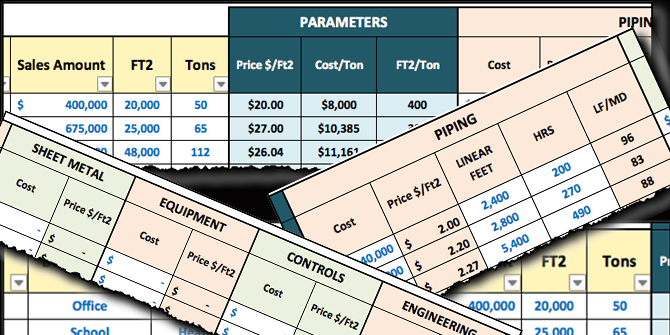
If you plan on being in business for the long haul, maintaining historical data is a time and money saving habit that pays off. The Only VRF Installed Cost Historical Database on the market. Get your copy today at the discounted price of $99.00, normally $199.00
Please leave the VRF Wizards who read this article, information on how you track historical data or quickly budget projects. We all want to learn how we can save valuable time while providing competitive pricing for our customers.


